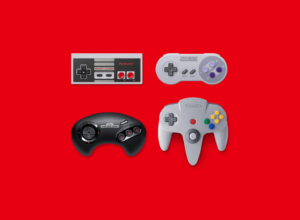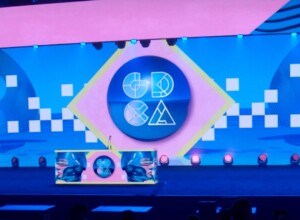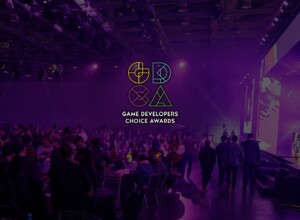Our big guide to the difference between the Nintendo Switch Lite and the original Nintendo Switch.
With the announcement of the Nintendo Switch Lite comes the questioning. Why should you buy this? Who is this for? Will it be right for me? What’s the difference between the Nintendo Switch Lite and the original?
We can’t necessarily answer the first three questions – that’s something only you can answer – but the third question? We’ve got you covered. And who knows: by the end, you might even be closer to an answer to the first three.
Here are the differences between the specifications of the original Nintendo Switch and the Nintendo Switch Lite.
Nintendo Switch Lite vs Nintendo Switch original
Size
- Nintendo Switch original: 102mm x 239mm x 13.9mm (with Joy-Con attached; 28.4mm at thickest point)
- Nintendo Switch Lite: 91.1mm x 208mm x 13.9mm (Joy-Con permanently attached; 28.4mm at thickest point)
- Takeaway: Nintendo Switch Lite 22.27% smaller by volume
Weight
- Nintendo Switch original: approx. 400g (with Joy-Con attached)
- Nintendo Switch Lite: approx. 275g
- Takeaway: Nintendo Switch Lite 31.25% lighter
Screen
- Nintendo Switch original: 6.2″ capacitive touch screen, 720p resolution (236.87 PPI)
- Nintendo Switch Lite: 5.5″ capacitive touch screen, 720p resolution (267 PPI)
- Takeaway: Nintendo Switch Lite screen 11.29% smaller (but 12.72% increased pixel density)
CPU/GPU
- Nintendo Switch original: Custom Nvidia Tegra
- Nintendo Switch Lite: Custom Nvidia Tegra
- Takeaway: Identical (though it’s possible Nvidia may have made incremental improvements to the Tegra chip since the original Switch’s release)
System memory
- Nintendo Switch original: 32 GB
- Nintendo Switch Lite: 32 GB
- Takeaway: Identical
Communications
- Nintendo Switch original: Wireless LAN (IEEE 802.11 a/b/g/n/ac compliant) / Bluetooth 4.1 / NFC
- Nintendo Switch Lite: Wireless LAN (IEEE 802.11 a/b/g/n/ac compliant) / Bluetooth 4.1 / NFC
- Takeaway: Identical
Video output
- Nintendo Switch original: Maximum resolution: 1920×1080, 60 fps (via Switch Dock/HDMI cable)
- Nintendo Switch Lite: None
- Takeaway: Nintendo Switch Lite does not support video output via Switch Dock
Audio output
- Nintendo Switch original: Supports linear PCM 5.1ch sound (via Switch Dock/HDMI cable)
- Nintendo Switch Lite: None
- Takeaway: Nintendo Switch Lite does not support audio output via Switch Dock
Speakers
- Nintendo Switch original: Stereo speakers
- Nintendo Switch Lite: Stereo speakers
- Takeaway: Identical
USB connectivity
- Nintendo Switch original: USB Type-C terminal (used for charging or for connecting to the Nintendo Switch dock)
- Nintendo Switch Lite: USB Type-C terminal (used for charging)
- Takeaway: Identical port, and presumably the Nintendo Switch Lite can charge via the standard Switch dock (but it won’t output video)
Headphone jack
- Nintendo Switch original: Stereo output
- Nintendo Switch Lite: Stereo output
- Takeaway: Identical
Expansion slots
- Nintendo Switch original: Nintendo Switch GameCard slot / microSD, microSDHC and microSDXC memory card slot
- Nintendo Switch Lite: Nintendo Switch GameCard slot / microSD, microSDHC and microSDXC memory card slot
- Takeaway: Identical
Sensors
- Nintendo Switch original: Gyroscope, accelerometer, brightness sensor
- Nintendo Switch Lite: Gyroscope, accelerometer
- Takeaway: Switch Lite doesn’t feature a brightness sensor, so won’t support automatic ambient brightness settings
Internal battery
- Nintendo Switch original: Lithium-ion battery, battery capacity 4310mAh
- Nintendo Switch Lite: Lithium-ion battery, battery capacity 3570mAh
- Takeaway: Switch Lite has a smaller battery due to its smaller physical size
Battery life
- Nintendo Switch original: Breath of the Wild can be played for three hours on a single charge
- Nintendo Switch Lite: Breath of the Wild can be played for four hours on a single charge
- Takeaway: Switch Lite’s smaller battery lasts longer, probably due to the smaller screen and updated Tegra chip
Controllers
- Nintendo Switch original: Detachable Joy-Con controllers with HD Rumble and IR blaster
- Nintendo Switch Lite: Fixed Joy-Con controllers (build into the handheld body, with full D-pad)
- Takeaway: The fixed Joy-Con controllers build into the Switch Lite don’t feature HD Rumble or an IR blaster, but the “left” one does have a proper D-pad
In summary, and as the name suggests, the key difference between the Nintendo Switch Lite and the Nintendo Switch original are its physical dimensions. It’s 22% smaller, 33% lighter, and has a smaller screen, albeit with a better pixel density. Because of these reduced dimensions, and in particular the reduced weight, this will make it more comfortable than the OG Switch for portable play.
Because this is a machine that’s designed specifically for handheld-only play, you can’t get the Switch Lite to output video or audio to your TV, and the Joy-Con controllers are built into the chassis of the unit, so they’re missing out on HD Rumble and an IR blaster. They’re not detachable, but you can still buy and pair additional Joy-Con controllers, so you’ll still be able to play 1-2 Switch. Though we can’t imagine that’s come up much as a complaint.
But other than that – and a few other minor differences, like the battery capacity – the Nintendo Switch Lite and Nintendo Switch original are basically the same. It’s just smaller, lighter, handheld only, and a bit cheaper. Also, it comes in some adorable colours. What’s not to love?






